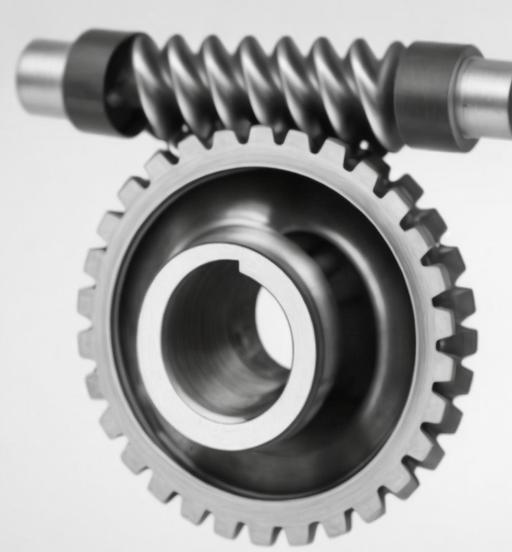Lubrication plays a critical role in extending the lifespan of worm gear by reducing friction, minimizing wear, preventing overheating, and protecting against corrosion. Here are some specific ways lubrication contributes to the longevity of worm gear systems:

1. Friction Reduction
- Mechanism: Worm gear operate with a sliding action that generates significant friction between the worm and worm gear. Proper lubrication forms a thin film between the contacting surfaces, reducing direct metal-to-metal contact.
- Benefit: Lower friction reduces the wear rate of worm gear teeth and the worm, resulting in a longer lifespan.
2. Wear Minimization
- Mechanism: Lubricants contain additives that help protect worm gear surfaces from abrasive and adhesive wear. These additives can form protective layers that prevent direct contact between the gear surfaces.
- Benefit: Reduced wear extends the operational life of the worm gear, maintaining its efficiency and performance over time.
3. Heat Dissipation
- Mechanism: Lubrication helps to dissipate the heat generated by friction during worm gear operation. Overheating can lead to thermal degradation of the gear material and lubricants.
- Benefit: Effective heat dissipation prevents overheating, reducing the risk of thermal damage and maintaining optimal operating conditions.
4. Corrosion Protection
- Mechanism: Lubricants create a barrier that protects worm gear surfaces from moisture and other corrosive elements. Some lubricants also contain anti-corrosion additives.
- Benefit: Preventing corrosion helps maintain the structural integrity of the worm gear, preventing premature failure due to rust or other forms of corrosion.
5. Load Distribution
- Mechanism: Proper lubrication ensures even distribution of the load across worm gear teeth. This helps in preventing localized stress concentrations that can lead to pitting or spalling.
- Benefit: Even load distribution reduces the risk of localized damage, extending the overall life of worm gear.
6. Noise and Vibration Reduction
- Mechanism: Lubrication can dampen the noise and vibration generated by worm gear operation. This is especially important in high-speed or heavily loaded applications.
- Benefit: Reduced noise and vibration contribute to a smoother operation and lower the risk of mechanical fatigue.
Types of Lubricants for Worm Gear
- Mineral Oils:
- Widely used due to their availability and cost-effectiveness.
- Suitable for moderate temperature and load conditions.
- Synthetic Oils:
- Offer superior performance in high-temperature and high-load conditions.
- Provide better viscosity stability and longer service life.
- Greases:
- Used in applications where oil lubrication is impractical.
- Suitable for low-speed and heavily loaded worm gear.
Lubrication Best Practices
- Proper Lubricant Selection:
- Choose the right type of lubricant based on the operating conditions, such as load, speed, temperature, and environmental factors.
- Consult manufacturer recommendations for the most suitable lubricant type and grade.
- Regular Lubricant Replacement:
- Follow a regular schedule for lubricant replacement to ensure optimal performance.
- Monitor lubricant condition and replace it if it becomes contaminated or degraded.
- Proper Application:
- Ensure that the lubricant is evenly applied and reaches all critical areas of the worm gear.
- Use appropriate methods for lubricant application, such as splash lubrication, circulation systems, or grease fittings.
- Monitoring and Analysis:
- Regularly monitor the condition of the lubricant through oil analysis to detect any signs of contamination, degradation, or wear particles.
- Use the data from oil analysis to make informed maintenance decisions and prevent potential issues.
By following these practices and ensuring proper lubrication, the lifespan of worm gear can be significantly extended, leading to improved reliability, efficiency, and cost savings in industrial applications.
